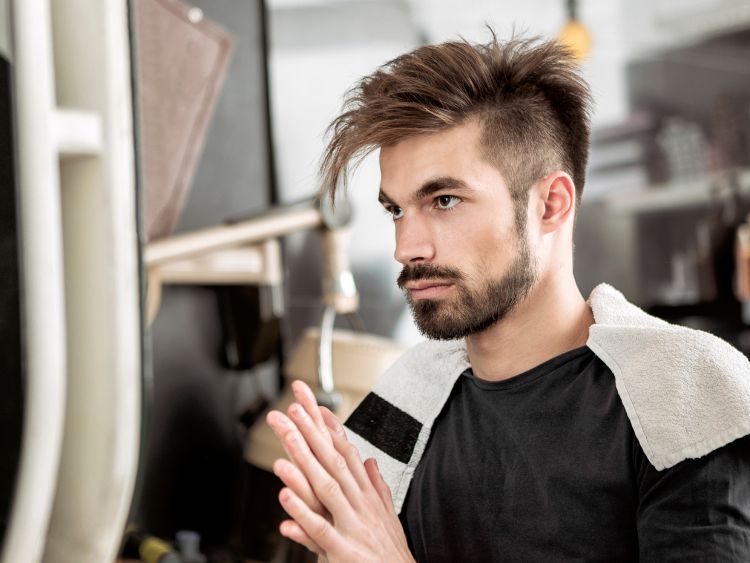The 1950s were an iconic era that brought a mix of elegance, rebellion, and timeless style. As the world recovered from the hardships of World War II, fashion reflected newfound optimism and prosperity. Designers introduced stunning silhouettes, bold colors, and refined styles that left a lasting impact on how we dress today. In this article, we’ll dive deep into the world of 1950s fashion, exploring its key elements, iconic figures, and lasting influence.
The Hourglass Silhouette: A Defining Look of the 1950s
When you think of 1950s fashion, the hourglass silhouette immediately comes to mind. This feminine shape was the cornerstone of the decade’s style, emphasizing a tiny waist with full skirts and fitted bodices.
Women’s fashion in this era embraced structure, with tailored dresses, cinched waists, and petticoats that created dramatic volume. Dresses often featured A-line or pencil skirt styles, and bold prints or polka dots were all the rage.
Key Elements of the Hourglass Silhouette:
- Fitted bodices: Accentuated the bust and waist.
- Full skirts: Added volume and drama, often worn with petticoats.
- Belts: A staple accessory to emphasize the waistline.
- High heels: Completed the look, giving the wearer a polished finish.
Men’s Fashion: Casual Cool Meets Refined Elegance
Men’s fashion in the 1950s was all about the balance between casual and formal. Suits were still very much in style, but casual wear, heavily influenced by Hollywood and the rise of rock ‘n’ roll, started making waves.
Suits and Formal Wear:
The typical suit of the 1950s was all about clean lines and fitted tailoring. Men often wore double-breasted jackets with narrow trousers, and ties were slim to match the sleekness of the overall look.
For evening wear, tuxedos remained a symbol of sophistication. However, Hollywood’s influence made the more casual “sports jacket and slacks” combination a popular option for the modern man.
The Rise of Rock ‘n’ Roll Style
Fashion wasn’t all about elegance during this time. The 1950s also gave rise to rebellious youth culture, particularly influenced by the birth of rock ‘n’ roll. Musicians like Elvis Presley made waves with their edgy looks, introducing leather jackets, blue jeans, and slicked-back hair as the go-to ensemble for those looking to break away from traditional norms.
Rockabilly fashion became synonymous with rebellion and teenage angst, marking the beginning of a fashion movement that continues to inspire modern-day trends.
Iconic Elements of Rockabilly Fashion:
- Leather jackets: Worn by rebels and rock ‘n’ rollers alike.
- Blue jeans: Made casual wear fashionable and rebellious.
- T-shirts and polo shirts: A departure from the buttoned-up formality of previous decades.
- Pompadour hairstyles: Popularized by icons like James Dean and Elvis Presley.
The Influence of Hollywood Glamour
Hollywood had a massive influence on 1950s fashion. Actresses like Marilyn Monroe, Audrey Hepburn, and Grace Kelly were style icons, setting trends that defined the decade. Whether it was the curve-hugging dresses worn by Monroe or the understated elegance of Hepburn, movie stars played a key role in shaping fashion choices worldwide.
Hollywood-Inspired Trends:
- Marilyn Monroe: Her famous white halter dress from “The Seven Year Itch” became an iconic look, representing the sex appeal and glamour of the era.
- Audrey Hepburn: Known for her classic and minimalist style, she popularized the little black dress, which remains a fashion staple today.
- Grace Kelly: As a symbol of elegance and refinement, Kelly’s sophisticated wardrobe choices, including her wedding dress, inspired bridal fashion for decades.
Accessories of the 1950s: The Perfect Finishing Touch
No 1950s outfit was complete without the right accessories. Women of the era paid great attention to detail, from gloves and hats to handbags and pearls.
Must-Have Accessories:
- Gloves: Often worn to formal events or church, they added a touch of class to any outfit.
- Hats: Pillbox hats and wide-brimmed styles were popular for women, while men often donned fedoras or trilbies.
- Pearls: A classic choice, pearls were the epitome of sophistication.
- Handbags: Women carried structured, ladylike handbags that matched their outfits.
- Scarves: Tied around the neck or worn as a headband, scarves added flair and color to any ensemble.
FAQs
- What was the most popular fashion trend in the 1950s? The hourglass silhouette was the defining fashion trend of the 1950s, characterized by fitted bodices and full skirts.
- Who were the style icons of the 1950s? Marilyn Monroe, Audrey Hepburn, and Grace Kelly were the leading fashion icons of the 1950s, each contributing their unique sense of style to the decade.
- What was rockabilly fashion? Rockabilly fashion was a rebellious style that emerged in the 1950s, heavily influenced by rock ‘n’ roll music. It featured leather jackets, blue jeans, and pompadour hairstyles.
- How did men’s fashion change in the 1950s? While suits remained popular, casual wear like sports jackets, slacks, and leather jackets became more mainstream, influenced by Hollywood and the rise of youth culture.
- Why were gloves and hats so popular in the 1950s? Gloves and hats were considered essential accessories in the 1950s, adding a polished and sophisticated touch to both casual and formal outfits.
Conclusion: The Lasting Legacy of 1950s Fashion
The 1950s fashion era continues to inspire designers, stylists, and fashion lovers today. From the elegant hourglass silhouette to the rebellious rock ‘n’ roll styles, the decade offered a variety of fashion choices that left an indelible mark on the world. Whether you prefer the sophistication of Audrey Hepburn or the edgy style of Elvis Presley, there’s no denying that the fashion of the 1950s was truly iconic.
Authoritative Links:
- fashionhistory.fitnyc.edu/1950-1959/
- vintagedancer.com/1950s/
- history.com/topics/1950s/fashion-in-the-1950s

